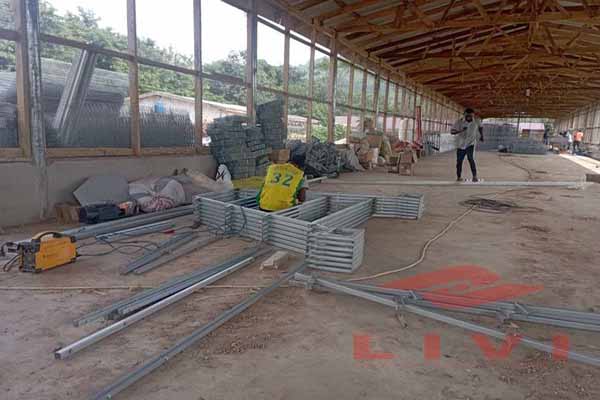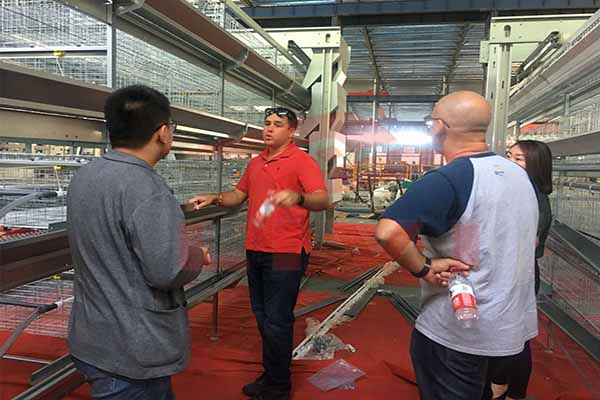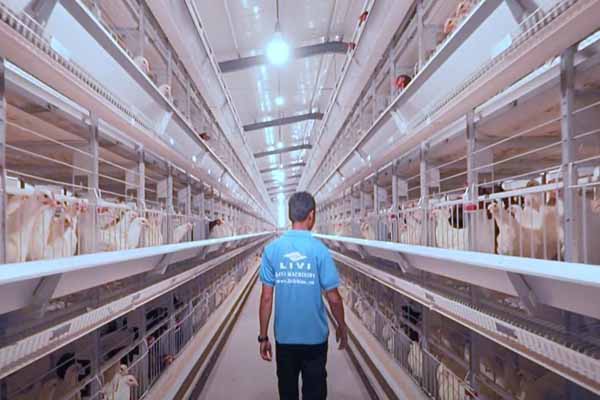Optimizing Chicken Cage Systems for 10,000 Birds in Zambia: A Comprehensive Guide
Time : 2025-06-29
As the poultry industry continues to expand in Zambia, the demand for efficient and scalable chicken cage systems has become paramount. With the aim of housing up to 10,000 birds, it is crucial to design systems that not only ensure the health and well-being of the birds but also optimize space, labor, and resource utilization. This article provides a detailed guide on the design and implementation of chicken cage systems tailored for a capacity of 10,000 birds in Zambia.

Understanding the Requirements
The first step in designing an effective chicken cage system is to understand the specific requirements of the operation. This includes considering the breed of chickens, climate conditions, and the overall goal of the farm. Let’s delve into these aspects.
Breed Selection
Choosing the right breed is essential for maximizing productivity. In Zambia, broiler breeds like Ross, Cobb, and Hubbard are popular due to their high growth rates and meat yield. These breeds require specific environmental conditions and feed formulations, which should be taken into account when designing the cage system.
Climate Considerations
Zambia experiences a range of climatic conditions, from hot and humid to cold and dry. The chicken cage system must be designed to maintain optimal conditions for the birds, regardless of the external weather. This involves proper ventilation, temperature control, and moisture management.
Designing the Chicken Cage System
The design of the chicken cage system should prioritize the following aspects:
Space Utilization
Each bird requires a certain amount of space to move around and exhibit normal behavior. For broiler chickens, this is typically around 0.6 to 0.8 square feet per bird. When designing for 10,000 birds, ensure that the space allocation is calculated accurately to avoid overcrowding.

Cage Construction
The cages should be made from durable materials that can withstand the weight of the birds and any potential damage from feed, litter, or manure. Stainless steel is a common choice for its resistance to corrosion and ease of cleaning. The design should also incorporate adjustable bars to accommodate the growth of the birds.

Automated Feeding and Watering Systems
Automated systems can significantly reduce labor costs and ensure consistent feeding and watering. The system should be capable of handling the volume of feed and water required for 10,000 birds and should be designed for easy maintenance and troubleshooting.
Manure Management
Effective manure management is crucial for maintaining a healthy environment for the birds. The system should include a manure collection system that allows for regular cleaning and waste disposal. This could involve slatted floors or automated scraping systems.
Environmental Control
The chicken cage system must provide controlled environmental conditions to promote growth and reduce the risk of disease. Key considerations include:
Temperature Control
Chickens are sensitive to temperature fluctuations. A reliable heating and cooling system is essential, especially during the first few weeks when the birds are most vulnerable. The system should be capable of maintaining a consistent temperature range, typically between 70°F to 80°F (21°C to 27°C) for broilers.
Humidity Control
High humidity can lead to respiratory issues in chickens. The system should include humidity control measures, such as air dehumidifiers or increased ventilation.
Ventilation
Proper ventilation is essential for maintaining air quality and preventing the build-up of harmful gases. The system should have sufficient ventilation to ensure a continuous supply of fresh air and to control ammonia levels.
Maintenance and Upkeep
Regular maintenance is critical for the longevity and efficiency of the chicken cage system. The following points should be considered:
Cleaning and Disinfection
The system should be designed for easy cleaning and disinfection to prevent the spread of disease. Regular cleaning and disinfection of the cages, feeding systems, and ventilation ducts are essential for maintaining a healthy environment.
Inspection and Repair
Regular inspections should be conducted to identify any potential issues or signs of wear and tear. Prompt repairs are necessary to prevent any disruptions in the operation.
Conclusion
Designing an effective chicken cage system for 10,000 birds in Zambia requires careful planning and consideration of various factors. By focusing on space utilization, cage construction, automated systems, environmental control, and maintenance, farmers can create an environment that promotes the health and productivity of their flock. With the right approach, chicken cage systems can be a key component in the success of a poultry operation in Zambia.
, , , , , , , , ,











